Novice
How is stress stored between tectonic plates?
Dr. Butler talks about elasticity and brittle material using a yardstick as a mechanical analog for the lithosphere. The yardstick is a brittle material that has elastic properties, yet, like the lithosphere, is capable of generating earthquakes.
The lithosphere is brittle yet elastic. A yardstick is also brittle yet elastic and both are capable of storing energy and rebounding elastically. Both are also cabable of breaking and generating earthquakes. This demo shows why it is difficult to predict earthquakes.
Video lecture of Dr. Robert Butler, University of Portland speaking to middle-school teachers.
Discovery
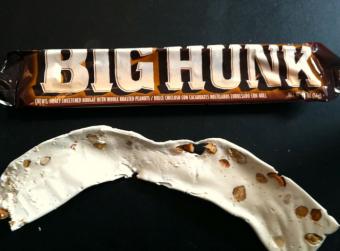
A candy bar, made almost entirely from nougat, is a useful model for connecting strain in rocks to faulting (earthquakes) and folding.
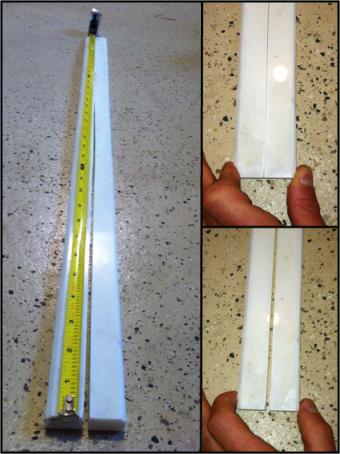
Through a demonstration lead by the teacher, the discrepant concept of rocks exhibiting elastic behavior is physically illustrated with an easily obtained, inexpensive model.
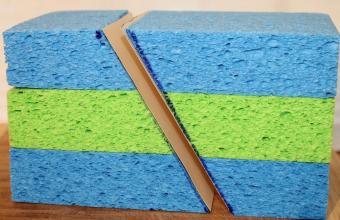
Fault types and rock deformation. The faults and folds in rocks provide evidence that the rocks are subjected to compressional, tensional, and/or shear stress. Silly Putty™ allows students to discover that the structure we see in rocks provides evidence for they type of stress that formed. Students apply this idea by examining images of faults and folds experimentation with sponge models.
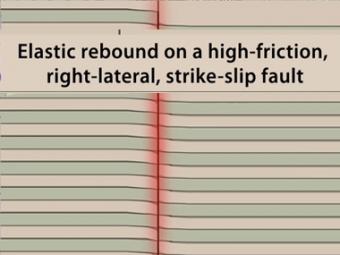
Animation shows the buildup of stress along the margin of two stuck plates that are trying to slide past one another. Stress and strain increase along the contact until the friction is overcome and rock breaks.
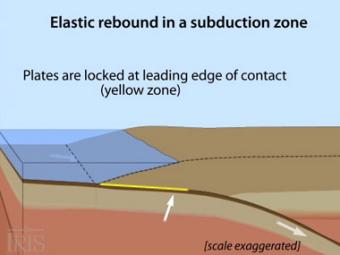
Oblique view of a highly generalized animation of a subduction zone where an oceanic plate is subducting beneath a continental plate. (See sketch below for parts.) This scenario can happen repeatedly on a 100-500 year cycle. The process which produces a mega-thrust earthquake would generate a tsunami, not depicted here.
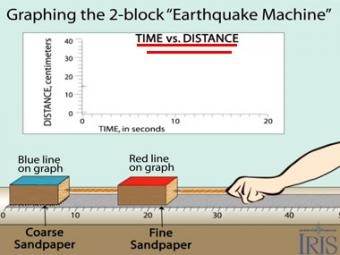
Graphing time vs. distance using the classic block-and-sandpaper "earthquake machine"

Graphing time vs. distance using the classic block-and-sandpaper "earthquake machine"
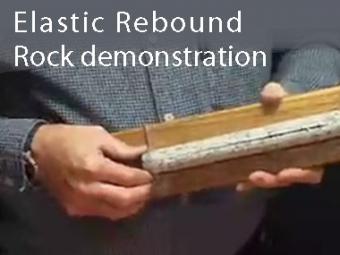
This demonstration shows that rocks are elastic by squeezing a slit core of rock.
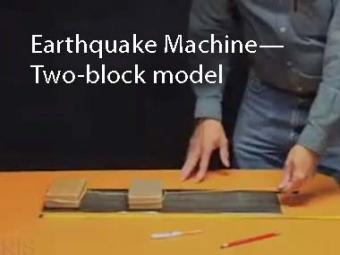
THE two-block "Earthquake Machine" uses two blocks with different grit sandpaper to model interactions between adjacent patches along a fault.
We encourage the reuse and dissemination of the material on this site as long as attribution is retained. To this end the material on this site, unless otherwise noted, is offered under Creative Commons Attribution (CC BY 4.0) license